7000 kilometres wide, Earth’s Inner core has shown signs of stopping and reversing its spin since 2009. But the question arises, what would be its consequences? The spinning of Earth’s inner core plays a crucial part in our lives and produces magnetic fields. But what if the core stops spinning altogether? Let’s get into details:
What If The Earth’s Core Stops Spinning?
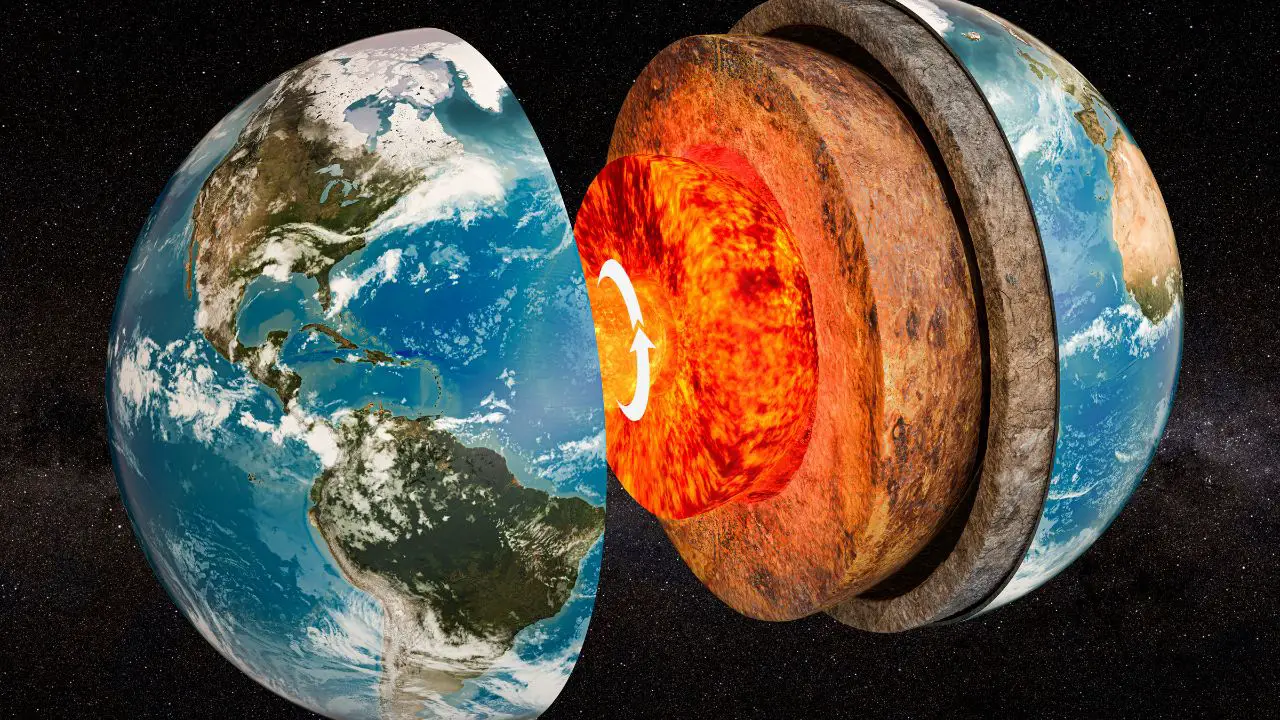
If the Earth’s Core stops spinning it’ll be catastrophic. It will majorly disturb the magnetosphere and geomagnetic activity as well as geological and environmental changes will occur.
Additionally, the redistribution of the oceans due to the absence of the centrifugal effect from rotation will have profound effects on the Earth’s rotation and ocean dynamics could have profound effects on the human and natural world. Additionally, the extreme forces might trigger strong tsunamis and earthquakes.
Also Read: How to survive an earthquake?
What would happen to the magnetic field if the inner core stops spinning?
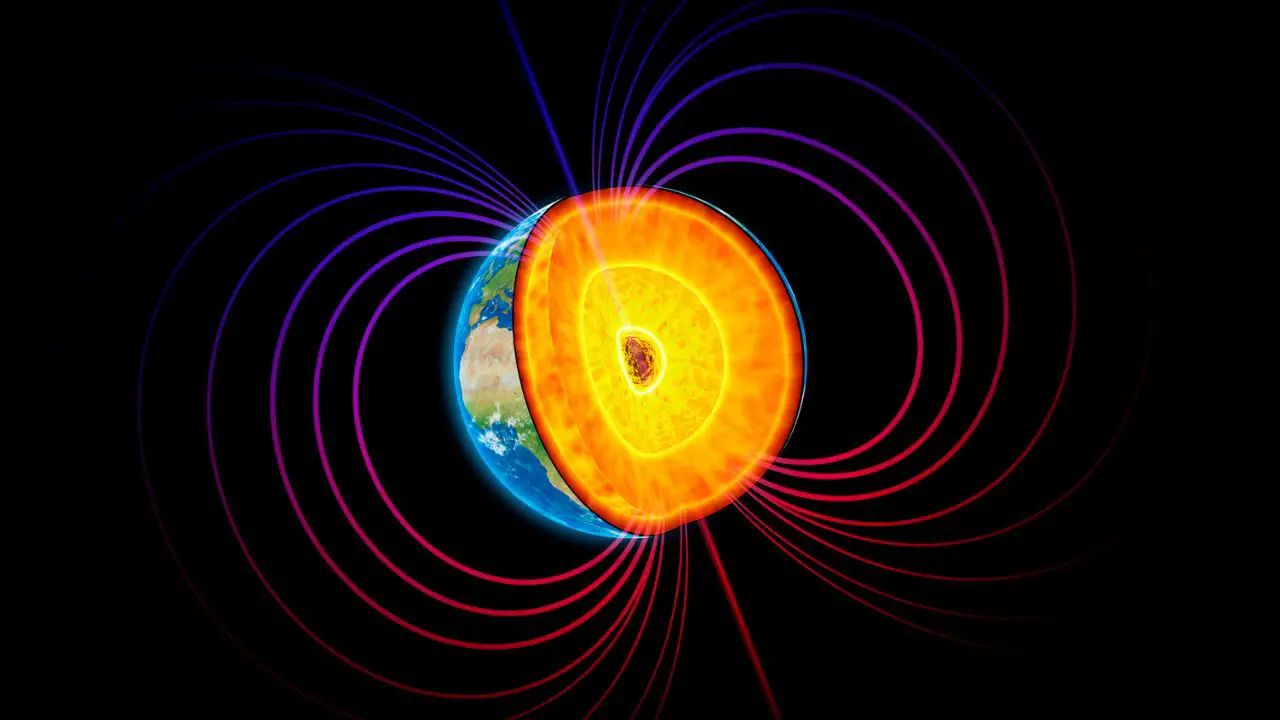
Spinning of the inner core plays a crucial role in generating the Earth’s magnetic field. When the inner core rotates, it generates a geodynamo effect (caused by fluid motion within a pre-existing magnetic field creating electric currents) which in turn produces the magnetic field.
However, the slightest change in the spin of the inner core can disrupt the strength and direction of the magnetic field. The magnetic field is a necessity for Earthlings as it protects us from solar radiation, and prevents the loss of atmospheric gases by deflecting solar wind, as well as, it influences climate change, hence its presence is fundamental for the habitability and sustainability of life on Earth.
Also Read : What Exactly Is An Earth-Like Planet?
Why is it believed that the inner core has stopped spinning?
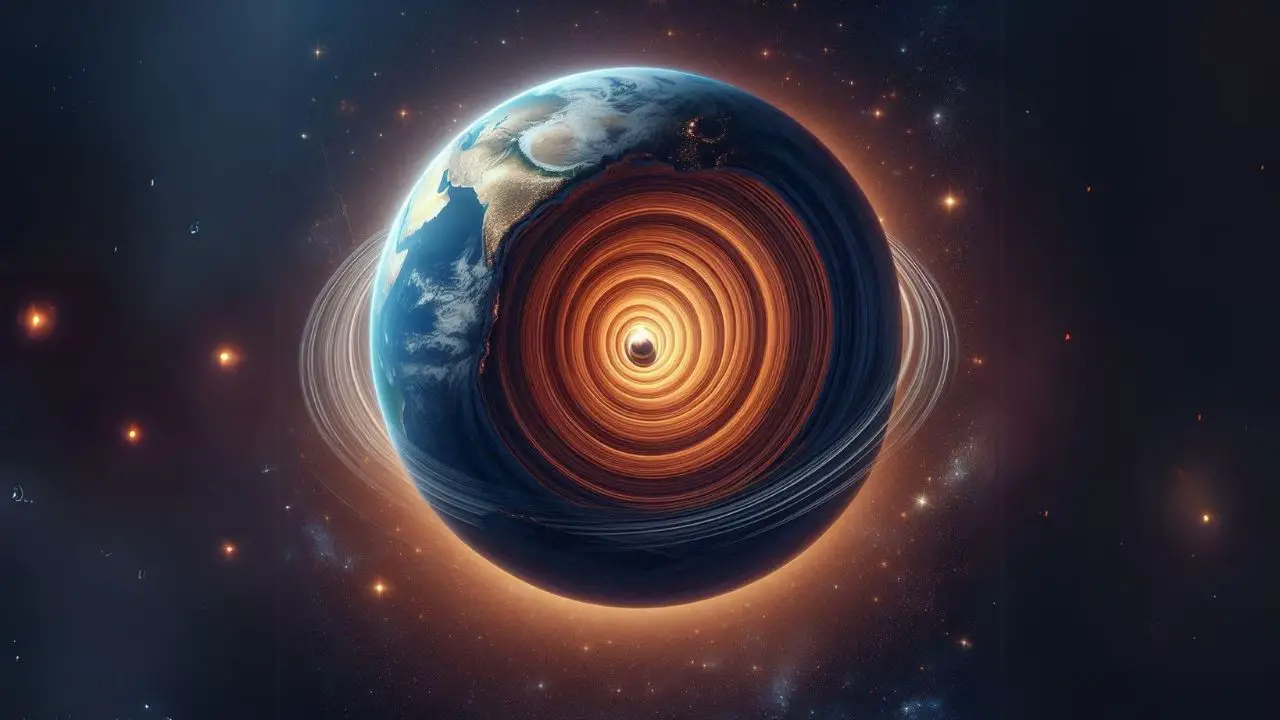
Geophysicists Yi Yang and Xiaodong Song of Peking University in Beijing write in their published paper (January 2023).
“We show surprising observations that indicate the inner core has nearly ceased its rotation in the recent decade and may be experiencing a turning-back in a multidecadal oscillation, with another turning point in the early 1970s,”
These geophysicists have been observing seismic waves since the 1960s and always had different results of seismic waves, however, since 2009, the seismic records show little to no difference in the intensity of waves. This shows the slowing or ceasing of the iron ball of the Earth’s inner core.
On the other hand, they also believe that the core has started moving in the reverse direction which means there is a possibility of catastrophic events to occur on the surface of Earth.
🔬 Subscribe to SciMail
Get the latest science discoveries straight to your inbox!
What could cause the inner core of Earth to slow down?
Based on the calculation of Yi Yang and Xiaodong Song of Peking University in Beijing, small changes or imbalances in electromagnetic and gravitational forces would be enough to alter the speed and rotation of the inner core.
Does the inner core change the direction of its spin?
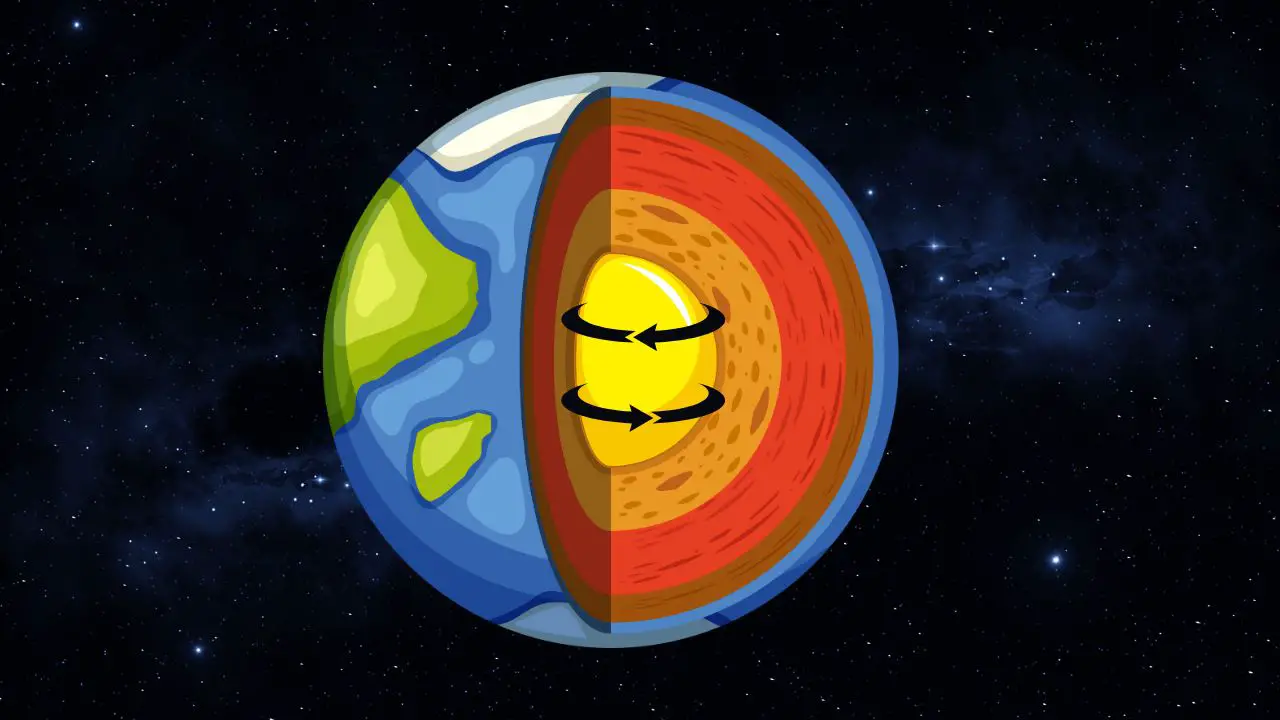
Yes, the inner core of Earth completes its cycle of spin in 75 years (according to the latest research), which means it changes its direction every 35 years. Based on these observations, geophysicists believe that this ceasing of spin might be part of this seven-decade cycle because the same event was observed in the early 1970s.
On the other hand, Hrvoje Tkalcic (geophysicist at the Australian National University) opposes this theory of slowed or ceased spin of the inner core, instead, he believes that nothing cataclysmic is happening. He explains:
“The objects of our studies are buried thousands of kilometres beneath our feet.”
“We use geophysical inference methods to infer the Earth’s internal properties, and caution must be exercised until multi-disciplinary findings confirm our hypotheses and conceptual frameworks,” he explained
“You can think of seismologists like medical doctors who study the internal organs of patients’ bodies using imperfect or limited equipment. So, despite progress, our image of the inner Earth is still blurry, and we are still in the discovery stage.”
What is the latest update on the spin of Earth’s inner core?
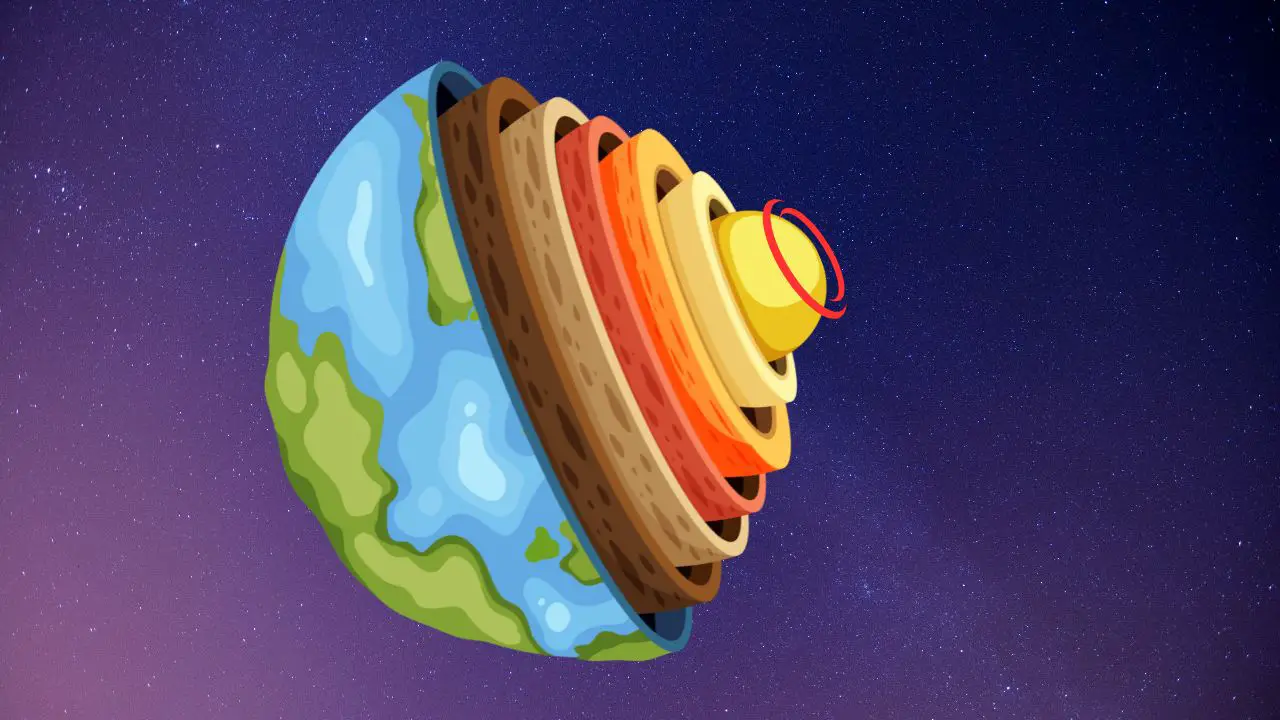
According to the latest research published on 12 June, 2024 (spearheaded by Dr. John Vidale, Dean’s Professor of Earth Sciences at the University of Southern California’s Dornsife College of Letters, Arts and Sciences) confirms the slowdown and rotation of earth’s core in the reverse direction and supports the model proposed in 2023 by geophysicists Yi Yang and Xiaodong Song .
FAQ’s
How fast does the Earth’s inner core spin?
The rotation of the inner core is like a pendulum and it spins faster than the surface of Earth. The solid iron crystal is estimated to rotate about 1 degree per year faster than the rest of the Earth on average.
What is the Earth’s core made of?
Earth’s inner core is purely made of nickel and iron. It has a radius of 2,200 miles which is as big as Mars, containing one-third of Earth’s mass.

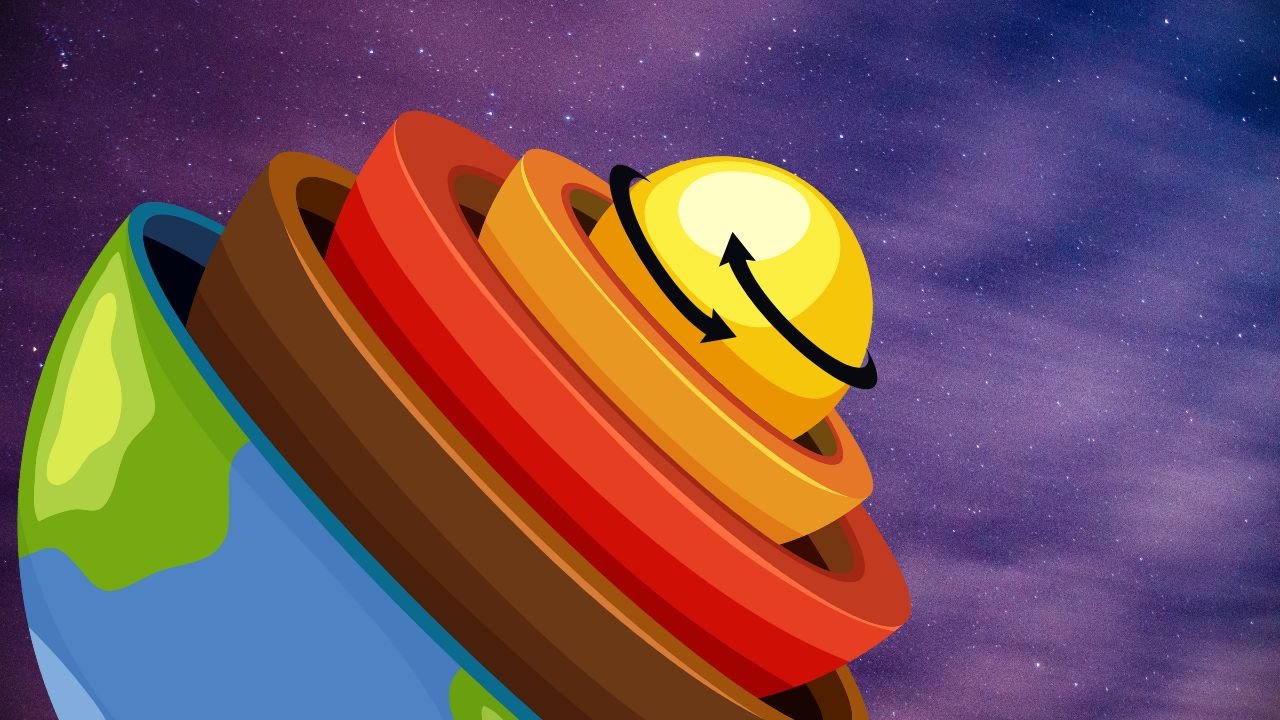
Leave a Reply